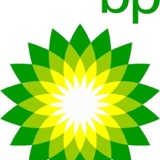Information
-
Document No.
-
Audit Title
-
Client / Site
-
Conducted on
-
Prepared by
-
Location
-
Personnel
PART A. Validation of general terminal management to include customer related processes, contractor management, internal and external communications (records and other documents will need to be sighted)
-
A1. Have all port staff completed the mandatory safety induction.
-
A2. Have all port staff completed a site specific induction - to include any reference to latest "Safety Alerts"
-
A3. Is the port operations manual / CA manual or other instructive documentation current.
-
A4. Are there any current lease agreements related to this terminal I.E land leases / sheds / silos (review lease currency)
-
A5. Does the physical stock sheet / board reflect accurate accounting stock (check and compare stock reports)
-
A6. Are corporate and other internal communications received and distributed to all port staff.
-
A7. Are all external contractors managed on site as required.
-
* have all external contractors reported to site management. Have work orders been sighted and agreed.
-
* have all external contractors completed the safety induction and site induction.
-
* do all external contractors including bunker contractors have the required PPE.
-
* have all external contractors been briefed on environmental obligations whilst on site (spills, waste, etc)
PART B. Verification and review of records, reports and other documentation, communications and sign off. ( training records)
-
B1. Does the maintenance request accurately describe the work or repairs required.
-
B2. Has the machine operators report been completed correctly (also check this report book as on the machine)
-
B.3 Are toolbox talks carried out regularly and completed as expected (Form GC 141/2/ 9sept10)
-
B4. Are safety consultative minutes available providing evidence of closed out action items.
-
B5. Have CPARS been actioned.
-
B6. Have PFR's been raised (within the last month) actioned and closed out.
-
B7. Has the rail safe permit been completed for all rail unloading activities (Form GC 594/ v / 0 / 5 Feb 09)
-
B8. Has the bunker storage inspection form been completed as required (GC 442 / v / 0 / 3 June 08)
-
B9. Has the fumigation activities record been completed correctly (GC 106 / v 3 / 5 may 08)
-
B10. Are fumigation clearance certificates completed and correct (GC 107 / v 6 / 2 April 08)
-
B11. Are daily pesticide mixture prepared work sheets completed correctly (GC 010 / v 6 / 6 may 08)
-
B12. Are regular hygiene reports completed with actions followed up completed and signed off.
-
B13. Are bird control services and records completed.
-
B14. Are rodent control records available and completed.
-
B15. Has the port environmental checklist been completed at regular intervals.
-
B16. Have any noticeable environmental issues been actioned (from the checklist)
-
B17. Has this port terminal received any recent environmental complaints from external parties.
-
B18. Has this port terminal had an external environmental audit within the last 12 months.
-
B19. Have actions from internal and or external audits been auctioned and signed off (EPA, QMS, AQIS, NCSI, etc)
-
B20. Has there been any incident reports raised.
-
B21. Has action been taken to address all issues raised as a result the incident report.
-
B22. Is all the equipment listed on the 'record of equipment calibration' within test date.
-
B23. Are training records available to include (safety, rail, ship loader, learning@GrainCorp etc) Chain of Responsibility.
-
B24. Do machine operators hold certificates / licence or under logbook supervision.
PART C: Review ships file / processes and documentation to include correct sign off by the responsible person / persons. ( review last three vessels)
-
# is this an approved arrangement terminal or AQIS monitored.
-
C1. Is the approved arrangement - Ex Register form 611 / v / 0 completed correctly.
-
C2. Is the approved arrangement - Phytosanitary certificate register complete.
-
C3. Is the approved arrangement pre - shipping checklist complete.
-
C4. Is the pre - shipment hygiene checklist complete.
-
C5. Is the authority to load complete (GC709 / v5 / 15 jan 10)
-
C6. Is the authority to load - multiple parcel complete (GC712 / v4 / 15 jan 10)
-
C7. Has the blending report been completed and verified (form 679 / v 0)
-
C8. Does the file contain the NRS Report (National Residue Survey)
-
C9. Is there a certificate of weight and quality.
-
C10. Is the loading plan complete and agreed.
-
C11. Does the file contain the Proposed Bin Profile.
-
C12. Is the cargo aggregation sheet complete.
-
C13. Is the ship to shore safety checklist complete and signed off (form 648 / v0)
-
C14. Has the shipping analysis been completed (GC710 / v 5 / 1 April 11)
-
C15. Has the shipping analysis been completed (GC580 / v 0 / 12 Jan 2008)
-
C16. Has the statement of fact / vessel details been completed correctly.
-
C17. Is the record of inspection and testing complete.
-
C18. Has the vessel loading log been completed and correct.
-
C19. Has the Wood chip loading log been completed.
-
C20. Has the wood chip summary sheet been completed.
PART D: Review documentation and process for container packing ( review files for last three export destinations)
-
D1. Is the export clearance declaration ( EX28 or EX 222) complete.
-
D2. Has the declaration of inspection of empty shipping containers been completed.
-
D3. Has the notice of intention to export been completed.
-
D4. Has the grain inspection worksheet been completed.
-
D5. Has the Phytosanitary information been confirmed and completed.
-
D6. Has the work register / checklist been completed.
-
D7. Are the container shipping and packing instructions agreed and signed off? (GC 681 / v0 / 2 April 09)
-
D8 does the communication log contain all client correspondence.
-
D9. Has flow path screening been completed.
-
D10. Is the record of inspection and testing been fully completed.
-
D11. Is there any additional customer or AQIS documentation for the file.
-
D12. Is there a RFP ( request for permit ) or PIG?<br>
PART E: Control Room
-
E1. Is there a control room diary or control room log ( any ship notations - other)
-
E2. Is there documented control room action using (form GC614 / v0 / march 09)
-
E3. Is there a daily summary of receivables completed (GC 582 / v0 / 13 jan 09)
-
E4. Has a blending report been authorised and completed (form 678 / v0)
-
E5. Has a grading worksheet been completed (form 616)
-
E6. Has a loading / discharge sequence summary form been completed.
-
E7. Has the MR - vessel outload / in load sheet been completed.
PART F: Review laboratory and testing processes.
-
F1. Has the composite bin defect sheet been completed. (Queensland)
-
F2. Has the shipping analysis report been completed and communicated (GC710 / v5 / april 2011)
-
F3. Has the shipping analysis been completed (GC 580 / v 0 / 12 jan 08)
-
F4. Are all instrument calibrations within date.
-
F5. Have all hatch sample reports been completed and communicated.
-
F6. Does the laboratory have all latest commodity charts and reference materials.
-
F7. Have the latest PFR's been auctioned (PFR's within last 3 months)
PART G: This section relates to the terminal walk-around inspection and review of on site activity.
-
G1. Are roadways and traffic areas clear and un obstructed.
-
G2. Are all areas around the storage and administration area clean and uncluttered.
-
G3. Is the weigh bridge platform clean and free of dust and other rubbish build up.
-
G4. Are the weigh bridge approached level and compliant for the weighing purposes.
-
G5. Is there a current vehicle identification chart available for the weighed as reference.
-
G6. Does the weigher have a good knowledge of mass limits on road vehicles for both intake and out turn.
-
G7. Has the weigher been provided with Chain of Responsibility information (been trained in COR)
PART H. Verify compliance to all bunker requirements for both intake and outload.
-
H1. Is the bunker covered.
-
H2. Are the covers secure.
-
H3. Are all seams sealed and water tight as required.
-
H4. Is there any noticeable water ingress or other issue that could affect the quality of the commodity being stored.
Site Environmental Review.
-
1. Are external contractors compliant with site requirements (no old tyres, no oil changes on site, control of other fluids)
-
2. Are elements such as dust and noise controlled.
-
3. Are fuel tanks bundled and protected from impact.
-
4. Are fuel hoses and pipes in good condition.
-
5. Is there evidence of any fuel leaks, oil leaks or chemical spills.
-
6. Are there adequate spill kits available in vulnerable areas.
-
7. Is there any build up of waste plastic on site (bunker cover waste)
-
8. Is the disposal of waste grain and dust compliant to environmental waste management guidelines.
-
9. Is the storm water run off controlled so as not to cause excessive ground erosion or excessive pounding.
-
10. Is there secondary containment or silt traps in the storm water catchment.
-
11. Are the storm water drains cleaned regularly.
-
12. Is there trackable waste on site: old tyres,waste oils, lead based paints, asbestos,water/ oil mix, volumes of PVC.
-
13. Have there been any environmental improvement plans developed for this terminal.
Site safety compliance to include all safety reporting and completion of mandatory forms and permits.
-
# is the site safety notice board compliant with current document.
-
# Heath and Policy Statement
-
# Rehabilitation Policy Statement
-
# Drug and Alcohol Policy Statement
-
# incident Reporting Flowchart
-
# Initial Verbal Escalation Chart
-
# Safety Alerts ( 3 month on board)
-
# who represents you poster
-
# What to do if you are injured at work - poster
-
# Have the latest Safety Alerts been signed off.
-
# is the gas monitor withincalibrationdate
-
# Is the first aid kit stocked
AUDIT CLOSE OUT.
-
ACTIONS:











